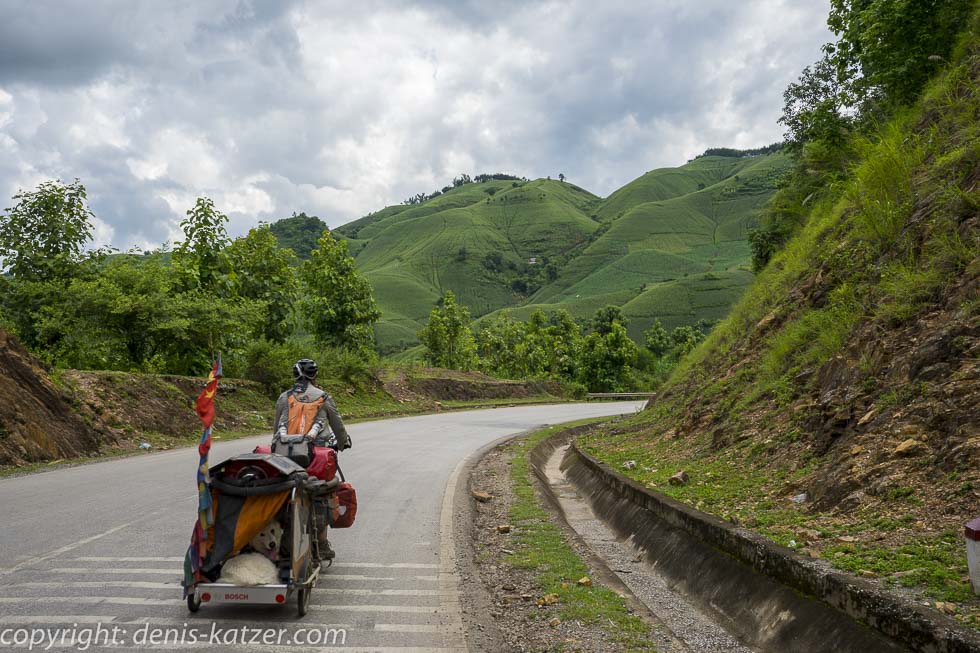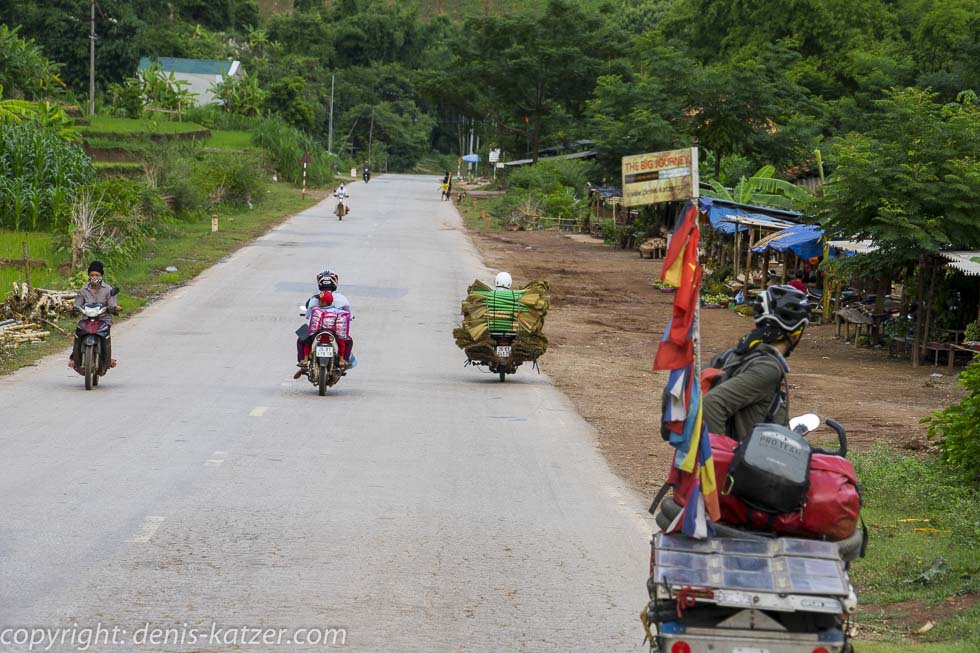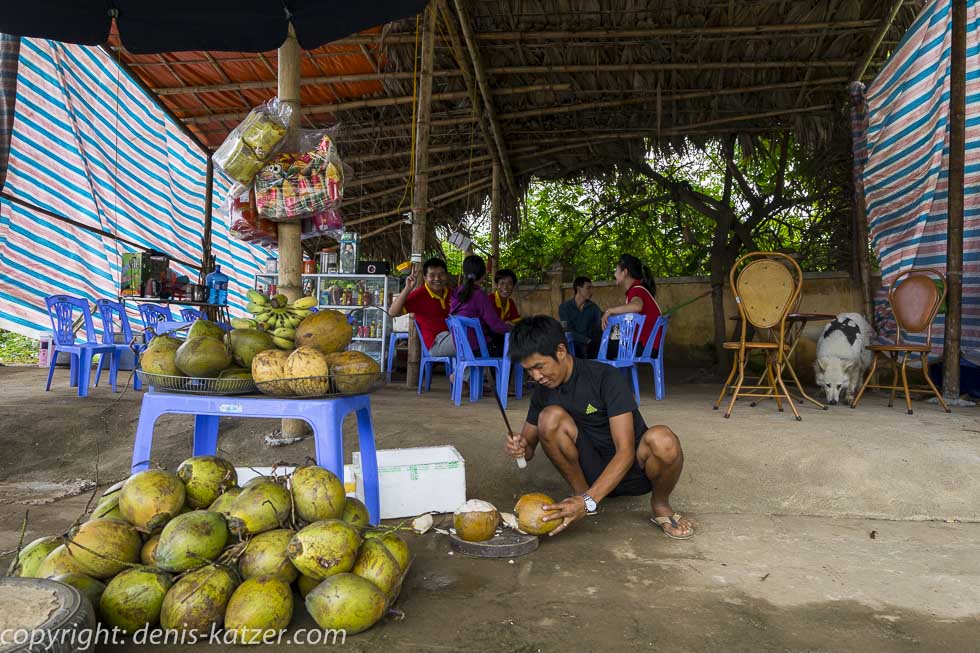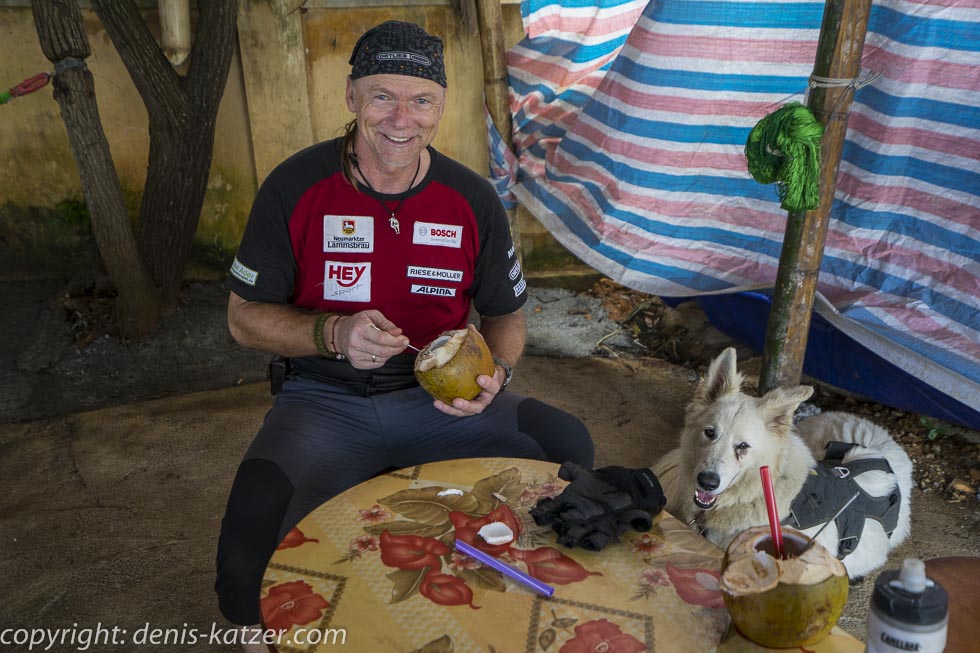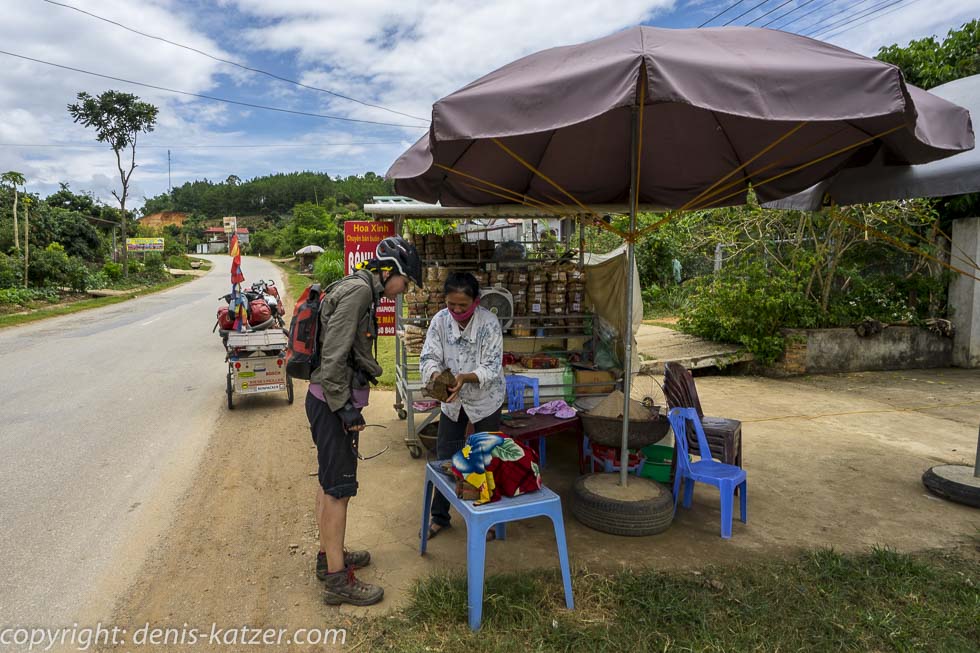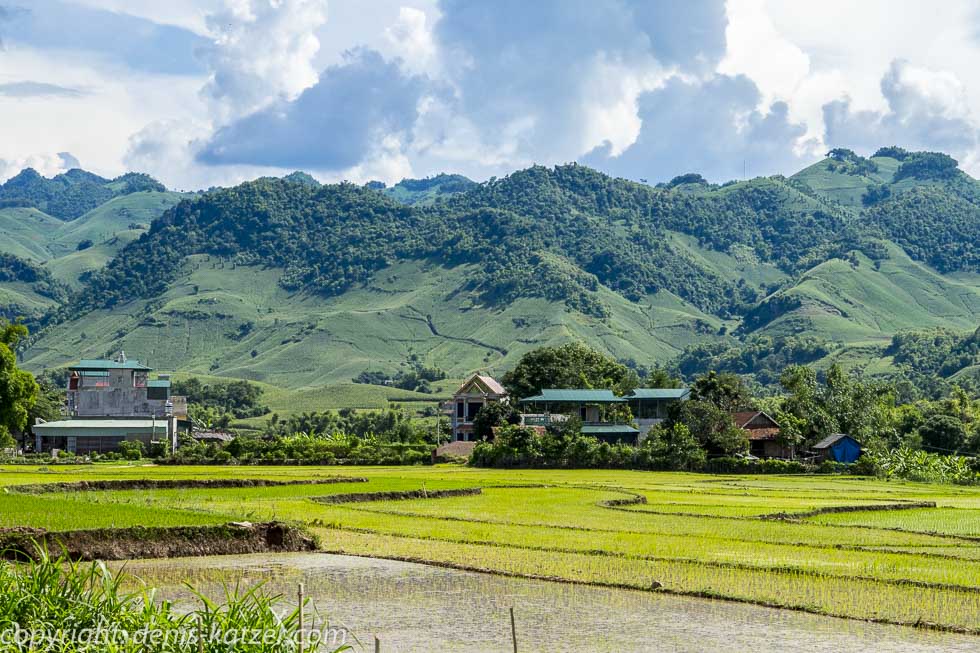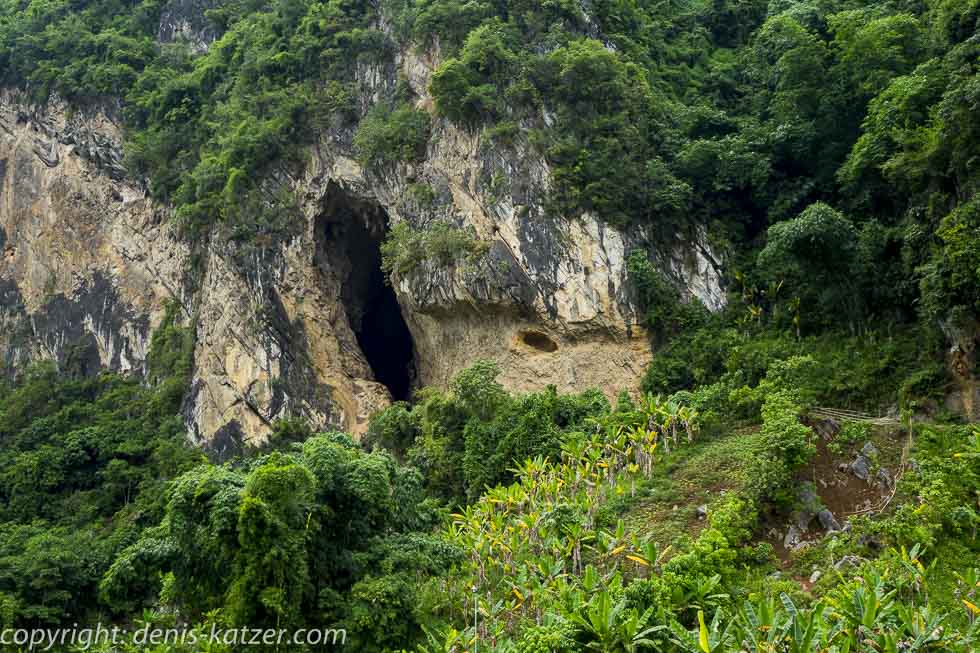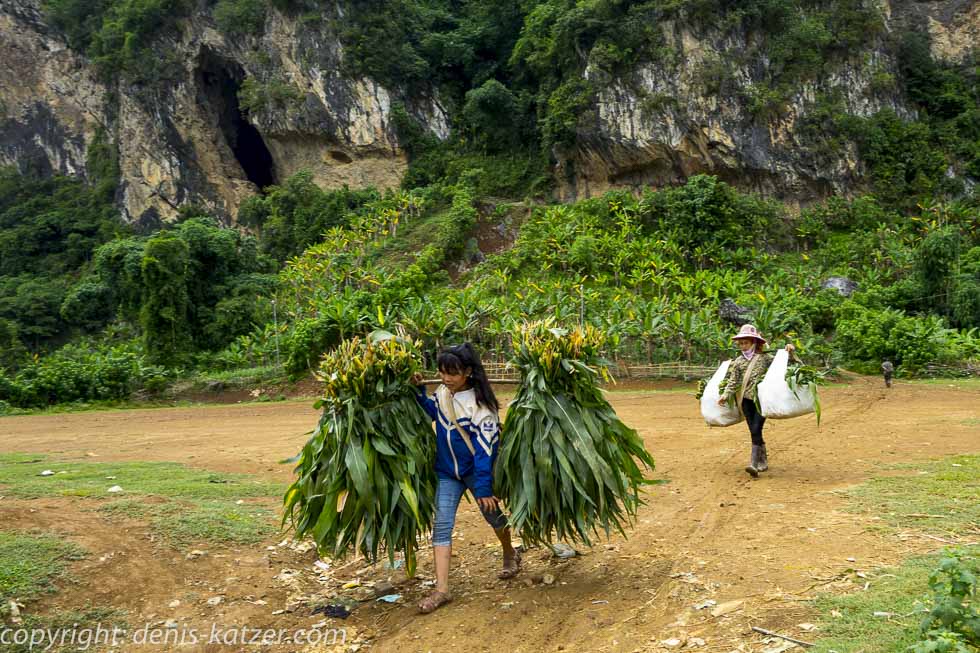
Surprise package and tropical fruit
N 21°02'46.0'' E 104°17'59.0''
Date:
29.07.2016
Day: 398
Country:
Vietnam
Province:
Sơn La
Location:
Yen Chau
Latitude N:
21°02’46.0”
Longitude E:
104°17’59.0”
Daily kilometers:
100 km
Total kilometers:
18,022 km
As the crow flies:
77 km
Average speed:
22 km/h
Maximum speed:
66.6 km/h
Travel time:
4:26 hrs.
Soil condition:
Asphalt
Maximum height:
800 m
Total altitude meters:
53.221 m
Altitude meters for the day:
779 m
Sunrise:
05:35
Sunset:
6:43 pm
Temperature day max:
29°C
Temperature day min:
20°C
Departure:
9:30 a.m.
Arrival time:
16:00
(Photos of the diary entry can be found at the end of the text).
This morning presents us with a long flat section without a climb. Suddenly the mountains recede into the distance. We cycle through a wide valley and reach the capital Son La of the province of the same name. The streets are dirty and the traffic is heavy. Gone is the peace and solitude of the mountains. “It’s pretty ugly here!” exclaims Tanja. “Yes, from what I’ve read, the city is still suffering from the consequences of the Vietnam War. Allegedly the American B-52 bombers dropped their deadly load over the city on their return flight. So it must have been badly destroyed and has never really recovered to this day.” “There are fresh coconuts. Let’s stop!” Tanja calls out a little later. “Good idea,” I reply and brake abruptly. Scattered blue plastic chairs and tables stand on the ground under a thatched roof. The owner of the stall welcomes us cheerfully. For 25,000 dong (€1) each, he opens a coconut with his machete, sticks a thick straw in it and serves it to us with a laugh. “Delicious,” I say, sipping the fresh coconut milk. The prudent salesman brings Ajaci fresh water. So we sit together in the shade of the thatched roof and quench our thirst, while some Vietnamese tourists sitting at the next table keep taking photos of us.
As the journey continues, the idyllic landscape really does seem to be history. To the left and right of the street, houses, small stores, repair workshops and stalls line up without interruption. There are no open spaces that give us a view of the nearby rice fields or the Nam La river. When it finally becomes a little more rural again, we stop at one of the numerous stalls. A farmer’s wife offers homemade desserts under a parasol. “Do you really want to try it?” I ask Tanja. “Sure, I bet it tastes interesting,” she says, pointing to one of the packets wrapped in dried banana leaves. The woman immediately grabs one of these surprise packages, wraps it in two layers of leaves and hands it to Tanja. After Tanja doesn’t know what to do with the thing, the smiling saleswoman takes it out of her hand again and pulls off the last layer of leaves in many small strips. In doing so, she shows fingertip sensitivity. Then she hands Tanja the half-opened little packet again and tells her to bite into the black, sticky mass that has appeared. “Hmm, quirky but not bad. Would you like to try it?” she asks. I carefully sink my incisors into the extremely sticky, slightly sweet dough. “Actually, it tastes good,” I agree with Tanja. A moped driver stops next to the stall and greets us in a friendly manner. “Can I help you?” he asks in good English. We strike up a conversation and ask him what this dessert is made from. “Bánh gai is a typical Vietnamese sweet. We make it from the dried, cooked and chopped leaves of a tree we call “gai”. We mix this dough with glutinous rice, shape it as desired and fill it with a mixture of coconut, mung beans, peanuts, sesame and lotus seeds. The whole thing is then wrapped in dried banana leaves.” “Wow, that’s a perfect explanation,” I praise him, to which he gives me a smile. Because we like the bánh gai, we buy a few packets and continue our journey.
In the afternoon, in the monkey heat, we stop at a mango stand and buy a few of the sweet-smelling tropical fruits. “A divine fruit,” I say, biting into it with relish, remembering that the mango was mentioned in the Hindu Vedas as a food of the gods as early as 1200 BC and is still sacrificed to the gods today as a sign of wealth and divine sweetness. The mango was first mentioned in a travelogue by an Italian in 1510. Portuguese sailors from India brought them across the world’s oceans to Europe. “Let’s go on,” Tanja interrupts my thoughts. We swing into the saddles. The road climbs back up into the mountains. We left the many houses, huts and stalls behind us. Rice terraces once again dominate the landscape. Women come towards us laughing. Over their shoulders they carry wooden poles from which hang huge, heavy bundles of leaves. Again and again we pass houses built on a pond. Numerous nets divide the water. We learn that fish are bred here, which play an important role in the Vietnamese diet. Clack, clack, clack, the sound of the aluminum wall of our dog trailer gets louder and louder. We stop from time to time, but I can’t detect a crack in the floor pan yet. “Can we still make it to Mai Chau?” asks Tanja. “I hope,” I reply…
If you would like to find out more about our adventures, you can find our books under this link.
The live coverage is supported by the companies Gesat GmbH: www.gesat.com and roda computer GmbH http://roda-computer.com/ The satellite telephone Explorer 300 from Gesat and the rugged notebook Pegasus RP9 from Roda are the pillars of the transmission. Pegasus RP9 from Roda are the pillars of the transmission.
